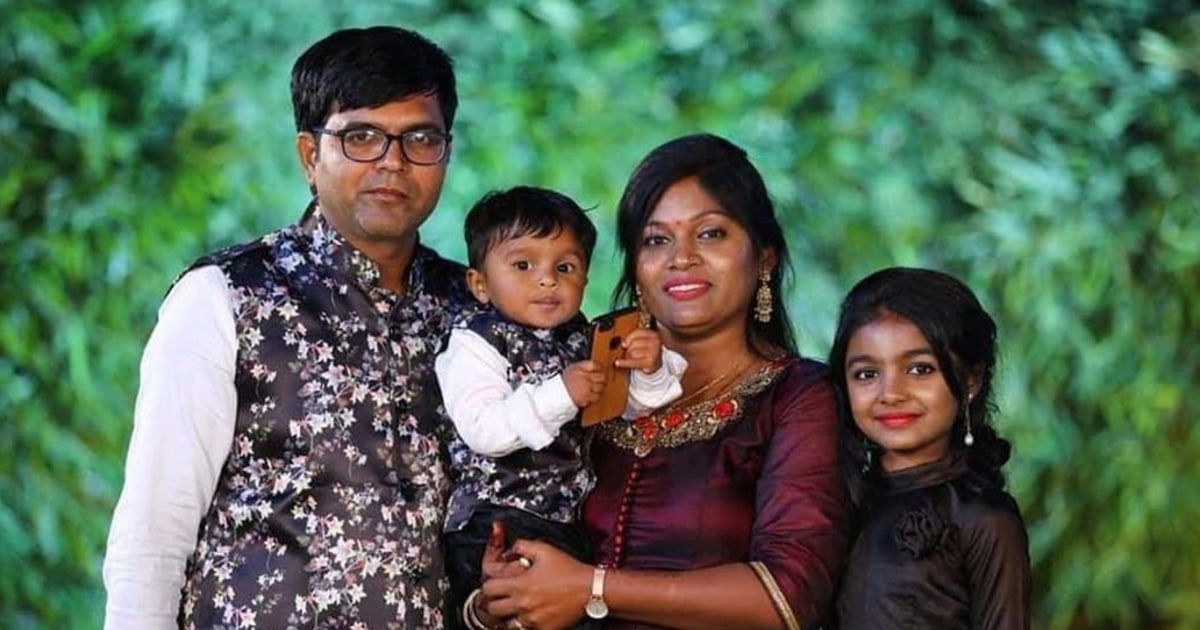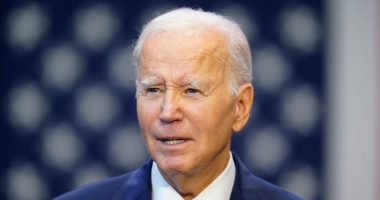
In the small village of Dingucha, in the state of Gujarat in western India, flyers are plastered on lampposts and buildings, hard to miss even on a short walk down the road. They advertise to the residents, most of whom live in poverty, a better life abroad. “Study in UK, Canada, Free Application, Offer Letter In 3 Days.”
The promise might sound too good to be true, but those who live there say many of their dreams revolve around it. “If there is money, they will go,” Ganpatbhai Patel, a resident of Dingucha, told NBC News in a translated interview.
Last month, a family took up that offer, as many had before. Jagdish Patel, 39, Vaishaliben Patel, 37, and their children, Vihangi, 11, and Dharmik, 3, left their home in Dingucha and set out for Canada. About a week later, their bodies were found 13 yards from the border, where they had froze to death trying to cross into the U.S. on foot.
“The U.S. holds kind of an allure or prominence,” said Pawan Dhingra, a professor of American studies at Amherst College. “There’s been a lot of success here by South Asians. … It becomes a place that seems more promising.”
The story of the Patels
Like many in Dingucha, Jagdish Patel worked in a factory. He made 9,000 rupees, roughly $120, a month for his family of four. His wife stayed home with the children, but neighbors say she dreamed of working in a beauty salon in the U.S.
It’s a story that experts say is barely on peoples’ radar. A lower-income, South Asian family crossing over the U.S.’s northern border seems to violate many tropes that define how Americans think about immigration, according to Dhingra.
“There’s definitely a dominant image of South Asians in the U.S. as coming on student visas or work visas, finding education and employment, oftentimes in white-collar positions,” he said.
But that doesn’t paint a completely accurate picture, he said. And for those who don’t have a school or company to sponsor their entry, the journey isn’t as straightforward. In Dingucha, where a neighbor of Jagdish Patel told reporters that he earns only $134 per month for a household of five, families weigh the pros and cons of getting to the West by different means.
“They are usually people above 30 who do not earn well in India and don’t see a good future for themselves and their families,” Janvi Sonaiya, a reporter with the Gujarat-based publication Vibes of India, told NBC Asian America. “They have met and seen several people like them who have come back to India after a decade and a half and talking about the quality of life and the bright future their children have.”
It’s a collectively recognized norm in the village that seems to be etched in ink for every resident to see. Success doesn’t come in Dingucha, Sonaiya said. It’s more likely to find those who leave it.
“When you walk in the streets of the village, you see no advertisements of food or grocery products,” she said. “All you see are ads of U.S. and Canada visas — most of them even mention that visas will be provided without exams.”
Family and friends of the Patels told Sonaiya that Jagdish was struggling. He wanted a better education for his kids, as well as better job opportunities and higher pay for himself and his wife, none of which he felt he could find in India.
Jagdish and Vaishaliben hardly told anyone where they were going. Ganpatbhai Patel, who lived near them, said that he only learned of their journey to Canada when news broke that they had died.
Though many details of their journey are still unclear, the Royal Canadian Mounted Police told NBC News the family flew into Toronto on Jan. 12 and then made their way to Manitoba. About a week later, they were dropped off in Emerson, a border town just north of Minnesota and North Dakota. Their bodies were found on Jan. 19 after a blizzard apparently separated them from their group, other Indian nationals and a Florida man, Steve Shand. The others made it across the border and were apprehended by U.S. border officials.
Shand was arrested and charged with the transport or attempted transport of illegal immigrants. His lawyers did not return NBC News’ request for comment.
When childcare items like diapers and toys were found with the remaining travelers, they revealed to authorities that four people who were traveling with them were missing. Some of the Indian migrants also told authorities that the group had been walking for no less than 11 hours.
Flying the bodies back for a funeral would have been too expensive, Dingucha community members told NBC News, so a cremation was held in Canada. Jagdish Patel’s brother answered a phone call, but hung up when asked about the deaths.
Despite the way the tragedy has shocked the village, Ganpatbhai said he doesn’t think it will deter people.
“If a man neither goes to the U.S. nor has any relatives there, then there is a faint chance that he will even get a bride,” another resident told Vibes of India, whose reporters spent time in Dingucha.
Investigators say human smuggling played a role, and Canada, the U.S. and India are working in tandem to identify the larger network involved. Indian police arrested several travel agents in Gujarat in connection with the Patels’ deaths. The details remain unclear, but that doesn’t matter to those desperate to escape, experts say.
“Every migrant makes an economic calculation around making a very perilous journey to come to the U.S.,” said Lakshmi Sridaran, executive director of South Asian Americans Leading Together, a civil rights organization.
An immigrant story that’s never told
The socioeconomic needs that drive a family like the Patels to embark on a treacherous journey abroad often follow them wherever they go. With South Asian populations growing in the U.S. and Canada, scholars say the homogeneity with which institutions view the community is harmful.
“The most marginalized are continually left out of those dominant narratives,” said Sruti Suryanarayanan, SAALT’s community and learning manager. “When it comes to talking about working-class folks, when it comes to talking about Dalit folks, people who are refugees, people who are undocumented … there are so many different reasons for people to seek residency in the U.S.”
If the Patels had crossed over into the U.S. and been detained like the rest of their group, they would have faced hostile conditions, said Sridaran and Suryanarayanan, who partner with immigration justice activists on the northern border. Besides migrating to pursue a better life, many South Asians are fleeing social persecution because of caste, faith or gender.
“If they do state political repression, religious repression, any of these things, they’re almost categorically denied asylum,” Sridaran said. “There’s nonexistent language access, denial of religious accommodations, the use of solitary confinement and gross medical neglect.”
On top of what they face in the detention centers, South Asians who come into the U.S. face a political system with no knowledge of the specific oppressions they might have faced back home.
“Judges don’t have a full, nuanced understanding of the sociopolitical tensions that are present in various communities,” Suryanarayanan said. “Why it’s different to be Dalit in Sri Lanka and in Afghanistan, and how those intersections affect people as they migrate.”
Through their civil rights work and the data SAALT collects, Sridaran and Suryanarayanan know that even when lower-income South Asians make it to the U.S., their barriers often follow them. Bengali and Indo-Caribbean neighborhoods in New York City have high rates of poverty, food insecurity and a lack of language access. India alone has at least 550,000 undocumented immigrants living in the U.S., among the highest nationalities, according to the Migration Policy Institute.
“South Asians are a really heterogenous group,” Dhingra said. “There’s a dominant image for a reason, but it overlooks the fact that a lot of South Asian immigrants are in poverty. They’re in the top 10 most undocumented groups in the country.”
It takes a certain amount of privilege to travel overseas at all, Dhingra said, and the poorest in a given country usually don’t leave. But for working-class folks who don’t see a future for themselves at home, there is no accessible straightforward way of getting out.
“There’s a demand being created to migrate to the U.S., but not a means that’s available to them that is safe,” Sridaran said.
Source: | This article originally belongs to Nbcnews.com










